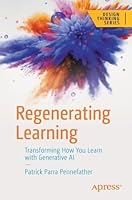
Python: Real World Machine Learning
- Length: 983 pages
- Edition: 1
- Language: English
- Publisher: Packt Publishing
- Publication Date: 2016-11-14
- ISBN-10: B01N74UY6B
- Sales Rank: #1112463 (See Top 100 Books)
Learn to solve challenging data science problems by building powerful machine learning models using Python
About This Book
- Understand which algorithms to use in a given context with the help of this exciting recipe-based guide
- This practical tutorial tackles real-world computing problems through a rigorous and effective approach
- Build state-of-the-art models and develop personalized recommendations to perform machine learning at scale
Who This Book Is For
This Learning Path is for Python programmers who are looking to use machine learning algorithms to create real-world applications. It is ideal for Python professionals who want to work with large and complex datasets and Python developers and analysts or data scientists who are looking to add to their existing skills by accessing some of the most powerful recent trends in data science. Experience with Python, Jupyter Notebooks, and command-line execution together with a good level of mathematical knowledge to understand the concepts is expected. Machine learning basic knowledge is also expected.
What You Will Learn
- Use predictive modeling and apply it to real-world problems
- Understand how to perform market segmentation using unsupervised learning
- Apply your new-found skills to solve real problems, through clearly-explained code for every technique and test
- Compete with top data scientists by gaining a practical and theoretical understanding of cutting-edge deep learning algorithms
- Increase predictive accuracy with deep learning and scalable data-handling techniques
- Work with modern state-of-the-art large-scale machine learning techniques
- Learn to use Python code to implement a range of machine learning algorithms and techniques
In Detail
Machine learning is increasingly spreading in the modern data-driven world. It is used extensively across many fields such as search engines, robotics, self-driving cars, and more. Machine learning is transforming the way we understand and interact with the world around us.
In the first module, Python Machine Learning Cookbook, you will learn how to perform various machine learning tasks using a wide variety of machine learning algorithms to solve real-world problems and use Python to implement these algorithms.
The second module, Advanced Machine Learning with Python, is designed to take you on a guided tour of the most relevant and powerful machine learning techniques and you’ll acquire a broad set of powerful skills in the area of feature selection and feature engineering.
The third module in this learning path, Large Scale Machine Learning with Python, dives into scalable machine learning and the three forms of scalability. It covers the most effective machine learning techniques on a map reduce framework in Hadoop and Spark in Python.
This Learning Path will teach you Python machine learning for the real world. The machine learning techniques covered in this Learning Path are at the forefront of commercial practice.
This Learning Path combines some of the best that Packt has to offer in one complete, curated package. It includes content from the following Packt products:
- Python Machine Learning Cookbook by Prateek Joshi
- Advanced Machine Learning with Python by John Hearty
- Large Scale Machine Learning with Python by Bastiaan Sjardin, Alberto Boschetti, Luca Massaron
Style and approach
This course is a smooth learning path that will teach you how to get started with Python machine learning for the real world, and develop solutions to real-world problems. Through this comprehensive course, you’ll learn to create the most effective machine learning techniques from scratch and more!
Table of Contents
Part I. Module 1
Chapter 1. The Realm of Supervised Learning
Chapter 2. Constructing a Classifier
Chapter 3. Predictive Modeling
Chapter 4. Clustering with Unsupervised Learning
Chapter 5. Building Recommendation Engines
Chapter 6. Analyzing Text Data
Chapter 7. Speech Recognition
Chapter 8. Dissecting Time Series and Sequential Data
Chapter 9. Image Content Analysis
Chapter 10. Biometric Face Recognition
Chapter 11. Deep Neural Networks
Chapter 12. Visualizing Data
Part II. Module 2
Chapter 1. Unsupervised Machine Learning
Chapter 2. Deep Belief Networks
Chapter 3. Stacked Denoising Autoencoders
Chapter 4. Convolutional Neural Networks
Chapter 5. Semi-Supervised Learning
Chapter 6. Text Feature Engineering
Chapter 7. Feature Engineering Part II
Chapter 8. Ensemble Methods
Chapter 9. Additional Python Machine Learning Tools
Appendix A. Chapter Code Requirements
Part III. Module 3
Chapter 1. First Steps to Scalability
Chapter 2. Scalable Learning in Scikit-learn
Chapter 3. Fast SVM Implementations
Chapter 4. Neural Networks and Deep Learning
Chapter 5. Deep Learning with TensorFlow
Chapter 6. Classification and Regression Trees at Scale
Chapter 7. Unsupervised Learning at Scale
Chapter 8. Distributed Environments – Hadoop and Spark
Chapter 9. Practical Machine Learning with Spark
Appendix A. Introduction to GPUs and Theano







